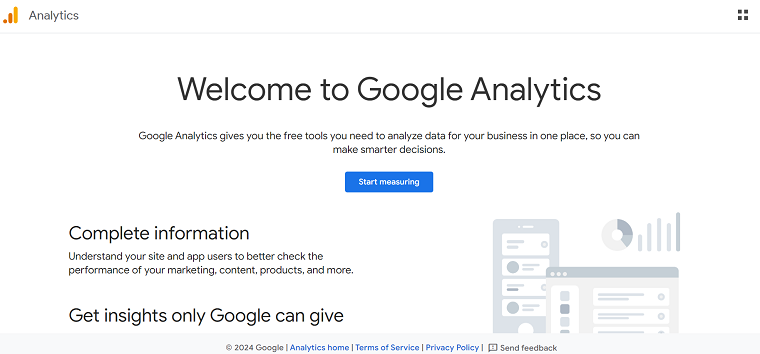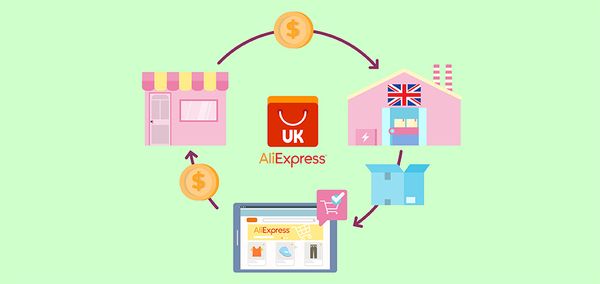Inventory Carrying Cost: What It Is & How to Calculate

Managing inventory is a crucial aspect of running a successful business, particularly for retailers and manufacturers. One key component of inventory management is understanding inventory carrying costs. These costs can significantly impact a company’s profitability and efficiency. In this article, we will explore what inventory carrying costs are, why they matter, the different types of costs involved, how to calculate them, and strategies to reduce these costs for more efficient inventory management.
What Is Inventory Carrying Cost
Inventory carrying cost, also known as holding cost, refers to the total cost associated with storing unsold goods. This encompasses various expenses that businesses incur while holding inventory over a specific period. These costs can include warehousing expenses, insurance, depreciation, and opportunity costs related to the capital tied up in inventory.
Carrying costs are critical to understanding because they directly affect a company’s bottom line. High carrying costs can lead to lower profit margins, while efficient inventory management can enhance profitability. Effectively managing these costs ensures that businesses maintain an optimal inventory level, preventing overstocking and stockouts.
Why Focus on Carrying Inventory Cost
Focusing on inventory carrying costs is essential for the overall health and profitability of a business. Understanding these costs can provide valuable insights that influence various operational decisions. Here are several compelling reasons to prioritize managing carrying costs, along with detailed explanations for each.
Enhance Profitability
One of the most immediate benefits of managing carrying costs is the potential for increased profitability. When businesses carry excessive inventory, they incur higher storage, insurance, and depreciation costs, which can eat into profit margins.
By optimizing inventory levels, companies can reduce these costs and improve their bottom line. Regularly assessing carrying costs allows businesses to make informed decisions about purchasing and stocking, ultimately leading to better financial outcomes.
Improve Cash Flow Management
Carrying too much inventory ties up capital that could be better utilized elsewhere. By focusing on carrying costs, businesses can free up cash flow, allowing for reinvestment in other areas, such as marketing, product development, or operational improvements.

|
Adapt Your Product Prices Automatically DSers Automatic Pricing - Pre-set Pricing Rule to mark-up your product price automatically |
Effective cash flow management is crucial for maintaining liquidity and supporting growth initiatives. By reducing carrying costs, companies can ensure they have the necessary funds available for critical business activities.
Boost Operational Efficiency
High carrying costs often indicate inefficiencies in inventory management practices. By addressing these costs, businesses can streamline their operations, reduce waste, and enhance productivity.
For instance, optimizing storage solutions and improving inventory turnover can lead to more efficient use of warehouse space and labor. This not only lowers costs but also enhances service levels, as businesses can respond more quickly to customer demands.
Gain Competitive Advantage
In today’s fast-paced market, businesses that effectively manage their inventory carrying costs can gain a significant competitive edge. Lower carrying costs can enable companies to offer more attractive pricing, which can draw in price-sensitive customers.
Additionally, businesses with optimized inventory levels can respond more swiftly to market changes, ensuring they remain relevant and competitive. This agility can be a key differentiator in crowded marketplaces.
What Are the Types of Inventory Carrying Costs
Inventory carrying costs encompass a range of expenses associated with holding unsold goods. Understanding these various types of costs is crucial for effective inventory management. Here are the main types of inventory carrying costs.
Storage Costs
Storage costs refer to the expenses incurred for physically storing inventory. This includes rent or lease payments for warehouse space, utilities like electricity and heating, and maintenance costs associated with keeping the storage facility operational.
Efficient warehouse management can help minimize these costs. For instance, opting for a location that balances cost with accessibility can reduce transportation expenses and improve inventory turnover rates.
Insurance
Insurance costs cover the premiums paid to protect inventory against potential risks such as theft, damage, or natural disasters. These costs vary based on the value of the inventory and the type of coverage needed.
For businesses with high-value or perishable goods, comprehensive insurance is essential. Regularly reviewing insurance policies can help ensure you have adequate coverage at a competitive rate, ultimately contributing to lower carrying costs.
Depreciation
Depreciation accounts for the reduction in the value of your inventory over time. This is particularly relevant for items that can become obsolete, spoil, or lose value due to market fluctuations.
For example, technology products often depreciate quickly as newer models are introduced. Calculating depreciation accurately is vital, as it reflects the true cost of holding inventory. Businesses must consider both the method of depreciation and the expected lifespan of their products when assessing this cost.
Opportunity Costs
Opportunity costs represent the potential income lost when capital is tied up in inventory instead of being invested elsewhere. For instance, if a business invests $100,000 in inventory instead of using that capital to generate returns through investments or other projects, the opportunity cost could be significant.
Understanding opportunity costs helps businesses evaluate the true financial impact of their inventory decisions and encourages them to optimize inventory levels to maximize returns.
Handling Costs
Handling costs arise from the labor and resources needed to manage inventory. This includes expenses related to receiving, storing, picking, packing, and shipping products. Efficient handling practices can help minimize these costs.

|
Pre-set the Best Shipping Methods DSers Shipping Settings - Pre-select your favorite shipping method to save money and time |
For example, implementing automated systems for inventory tracking can reduce labor costs and improve accuracy. Regular staff training involved in inventory management can also enhance efficiency and reduce handling costs.
Taxes
Depending on local regulations, businesses may incur taxes on inventory holdings. Property taxes can be particularly relevant for companies with significant warehouse space or high-value inventory.
Understanding the tax implications of inventory is essential for accurate financial planning. Businesses should stay informed about local tax laws and consider these costs when calculating overall carrying expenses.
Shrinkage
Shrinkage refers to the loss of inventory due to factors such as theft, damage, or administrative errors. This cost can significantly impact a business's profitability, especially in retail settings.
To mitigate shrinkage, companies should implement robust inventory management practices, such as regular audits and employee training. Investing in security measures can also help reduce theft and minimize losses.
How to Calculate Inventory Carrying Cost
Calculating inventory carrying costs involves summing up all the relevant expenses associated with holding inventory. The formula is generally represented as:
Total Inventory Carrying Cost = Storage Costs + Insurance + Depreciation + Opportunity Costs + Handling Costs + Taxes + Shrinkage
To illustrate how to calculate inventory carrying costs, let’s break down each component:
Storage Costs
Determine the total annual storage costs, which may include rent, utilities, and maintenance. For example, if your warehouse costs $10,000 per year to rent, that will be your storage cost.
Insurance
Calculate the annual insurance cost for your inventory. If you pay $2,000 per year for inventory insurance, this will be included in your carrying costs.
Depreciation
To calculate depreciation, you may use a straight-line method or other applicable methods based on the nature of your inventory. For instance, if your inventory value is $50,000 and has a useful life of 5 years, the annual depreciation would be $10,000.
Opportunity Costs
To estimate opportunity costs, consider the return you could earn if the capital tied up in inventory were invested elsewhere. If your inventory investment is $50,000 and the expected return rate is 10%, the opportunity cost would be $5,000.
Handling Costs
Calculate the annual costs associated with handling inventory, including labor and equipment. If you spend $8,000 annually on labor for inventory management, include this in your total.
Taxes
Determine any applicable taxes on your inventory holdings, such as property taxes. If your tax expense related to inventory is $1,500 annually, include this in your calculation.
Shrinkage
Estimate the annual loss of inventory due to shrinkage. If you experience an average loss of $3,000 per year due to theft or damage, factor this in.
Example Calculation
Let’s put this all together with an example:
- Storage Costs: $10,000
- Insurance: $2,000
- Depreciation: $10,000
- Opportunity Costs: $5,000
- Handling Costs: $8,000
- Taxes: $1,500
- Shrinkage: $3,000
Total Inventory Carrying Cost = $10,000 + $2,000 + $10,000 + $5,000 + $8,000 + $1,500 + $3,000 = $39,500
How to Reduce Inventory Carrying Costs
Reducing inventory carrying costs is vital for improving a company's profitability and operational efficiency. Check the following effective strategies to get started.
Optimize Inventory Levels
Regularly assess and adjust your inventory levels to align with actual demand. Implementing just-in-time (JIT) inventory practices can help minimize excess stock by purchasing and receiving goods only as needed for production or sales.
This approach reduces holding costs and prevents overstock situations. Use sales data and market analysis to forecast demand accurately, allowing you to maintain optimal inventory levels without tying up excess capital.
Explore Dropshipping
Dropshipping allows businesses to sell products without holding inventory, thereby eliminating carrying costs. In this model, the supplier ships products directly to the customer on behalf of the retailer.

|
Find Better Supplier For Products DSers Supplier Optimizer - One click to filter out the most proper suppliers for your products |
While this approach can reduce inventory overhead, it’s important to choose reliable suppliers who can maintain quality and timely deliveries. Dropshipping can be especially beneficial for testing new products or entering new markets without the risk of overstocking.
Improve Demand Forecasting
Accurate demand forecasting helps businesses predict customer needs more effectively, reducing the risk of overproduction or understocking. Utilize data analytics tools and historical sales data to identify trends, seasonal fluctuations, and customer preferences.

Collaborating with sales and marketing teams can provide additional insights into upcoming promotions or market changes. By refining your forecasting methods, you can make more informed purchasing decisions and adjust inventory levels proactively.
Negotiate Better Terms with Suppliers
Building strong relationships with suppliers can lead to better purchasing terms, such as bulk discounts, improved payment terms, or reduced shipping costs. Negotiating favorable terms allows you to lower the cost of goods sold and reduce the amount of capital tied up in inventory.
Consider consolidating orders to achieve bulk pricing or exploring alternative suppliers that offer better rates. Regularly reviewing supplier contracts can also identify opportunities for cost savings.
Implement Efficient Storage Solutions
Efficient warehouse management can significantly reduce storage costs. Optimize your storage layout by utilizing vertical space, implementing shelving systems, and organizing products for easy access.
Consider using technology such as warehouse management systems (WMS) to track inventory levels in real-time and improve space utilization. By enhancing your storage processes, you can lower costs associated with warehousing and improve overall efficiency.
Audit Inventory Regularly
Conducting regular inventory audits allows businesses to identify slow-moving or obsolete items that can be removed from stock. This proactive approach helps free up warehouse space and reduces carrying costs associated with excess inventory.
Implementing a cycle counting system, where a subset of inventory is counted on a rotating basis, can help maintain accuracy without disrupting operations. By keeping a close eye on inventory performance, you can make informed decisions about what to keep or liquidate.
Conclusion
Understanding and managing inventory carrying costs is crucial for any business that relies on inventory to generate revenue. By accurately calculating these costs and identifying the various components involved, businesses can gain valuable insights into their inventory management practices. With careful planning and attention to detail, managing inventory carrying costs can become a powerful tool in driving business growth.











 Company
Company
 Why Choose DSers
Why Choose DSers
 Blog
Blog
 Help Center
Help Center




 Live Chat
Live Chat